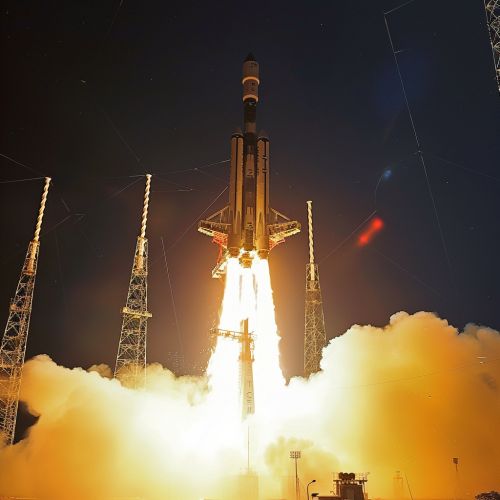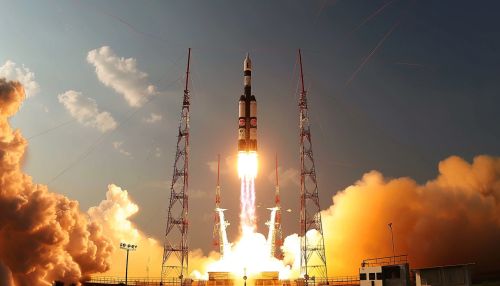Indian Space Research Organisation
History
The Indian Space Research Organisation (ISRO) was established in 1969 by Dr. Vikram Sarabhai, who is considered the father of the Indian space program. ISRO's inception was driven by the vision to harness space technology for national development while pursuing space science research and planetary exploration. The organization succeeded the Indian National Committee for Space Research (INCOSPAR), which was created in 1962.
ISRO's first satellite, Aryabhata, was launched by the Soviet Union on April 19, 1975. This marked India's entry into the space age. Following this, ISRO developed a series of satellites and launch vehicles, establishing a robust space program.
Organizational Structure
ISRO operates under the Department of Space (DoS), which reports directly to the Prime Minister of India. The organizational structure includes various centers and units, each specializing in different aspects of space technology and applications. Key centers include:
- Vikram Sarabhai Space Centre (VSSC): Focuses on the development of launch vehicles.
- Liquid Propulsion Systems Centre (LPSC): Specializes in the development of liquid propulsion systems.
- Satish Dhawan Space Centre (SDSC): The primary launch center for ISRO.
- Indian National Satellite System (INSAT): Manages communication satellites.
Launch Vehicles
ISRO has developed a series of launch vehicles to place satellites into various orbits. The primary launch vehicles include:
Satellite Launch Vehicle (SLV)
The SLV was ISRO's first experimental satellite launch vehicle, capable of placing small payloads in low Earth orbit. The first successful launch was in 1980, placing the Rohini satellite into orbit.
Augmented Satellite Launch Vehicle (ASLV)
The ASLV was developed to enhance payload capacity and reliability. It successfully launched the SROSS-C2 satellite in 1994.
Polar Satellite Launch Vehicle (PSLV)
The PSLV is one of ISRO's most successful launch vehicles, known for its reliability and versatility. It has launched numerous satellites into polar and geostationary orbits. Notable missions include the launch of the Mars Orbiter Mission (Mangalyaan).
Geosynchronous Satellite Launch Vehicle (GSLV)
The GSLV is designed to launch heavier payloads into geostationary transfer orbits. The GSLV Mk III, also known as LVM3, is the most powerful rocket developed by ISRO, capable of carrying large payloads.
Satellite Programs
ISRO has developed a variety of satellite programs to serve different purposes, including communication, Earth observation, and navigation.
Indian National Satellite System (INSAT)
The INSAT series is a multipurpose satellite system used for telecommunications, broadcasting, meteorology, and search and rescue operations. It is one of the largest domestic communication satellite systems in the Asia-Pacific region.
Indian Remote Sensing (IRS)
The IRS series of satellites are used for Earth observation. These satellites provide data for applications such as agriculture, forestry, land-use mapping, and disaster management.
Navigation with Indian Constellation (NavIC) is an autonomous satellite navigation system developed by ISRO. It provides accurate position information services to users in India and the surrounding region.
Space Science and Exploration
ISRO has undertaken several significant space science and exploration missions.
Chandrayaan Missions
The Chandrayaan-1 mission, launched in 2008, was India's first lunar probe. It made significant discoveries, including evidence of water molecules on the lunar surface. The follow-up mission, Chandrayaan-2, aimed to explore the south pole of the Moon with an orbiter, lander, and rover.
Mars Orbiter Mission (Mangalyaan)
The Mars Orbiter Mission (Mangalyaan) was launched in 2013 and made India the first country to successfully reach Mars on its first attempt. The mission provided valuable data on the Martian surface and atmosphere.
Astrosat
Astrosat is India's first dedicated multi-wavelength space observatory, launched in 2015. It observes the universe in visible, ultraviolet, and X-ray wavelengths, contributing to various astronomical studies.
Future Missions
ISRO has ambitious plans for future space exploration and technology development.
Gaganyaan
The Gaganyaan mission aims to send Indian astronauts to space. It will be India's first manned space mission, with plans to launch by the mid-2020s.
Aditya-L1
The Aditya-L1 mission is India's first solar mission, designed to study the Sun's outermost layer, the corona. It aims to provide insights into solar activities and their impact on space weather.
Lunar and Interplanetary Missions
ISRO is planning further lunar missions, including Chandrayaan-3, as well as interplanetary missions to explore Venus and other celestial bodies.
International Collaboration
ISRO collaborates with various international space agencies and organizations. Notable collaborations include joint missions, satellite launches, and technology exchange programs with agencies such as NASA, ESA, and Roscosmos.
Achievements and Contributions
ISRO has made significant contributions to space technology and applications. Its achievements include the development of indigenous launch vehicles, successful interplanetary missions, and the establishment of a comprehensive satellite network for communication, navigation, and Earth observation.
Challenges and Future Directions
Despite its successes, ISRO faces challenges such as budget constraints, technological advancements, and competition from private space companies. However, the organization continues to innovate and expand its capabilities, aiming to achieve greater milestones in space exploration and technology.
See Also


